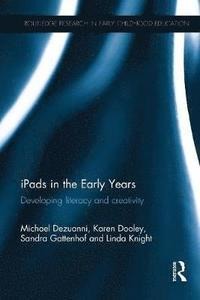
Liknande böcker
Translingual Partners in Early Childhood Elementary-Education
Bok av Maria Arreguin-Anderson
This book takes the reader through a journey into the practical and theoretical aspects of partner-based learning in bilingual early childhood environments. The authors begin by presenting compelling arguments for the significance of this approach noting the parallels between partner-based collaborative learning and developmentally appropriate practices for young learners. Part 1 weaves in tenets of a LatCrit perspective to highlight intersections of a social justice orientation to learning and teaching and a collaborative approach that capitalizes on Latinx bilingual children's linguistic repertoire and cultural capital. The authors unpack the translingual partner construct unveiling the potential of bilingual children as meaning-makers and language problem solvers. Part 2 contextualizes the concept of translingual partner interactions in two early childhood classrooms. Then, to bridge theory and praxis, Part 3 reveals what the authors have learned after thousands of observations, conversations, and interactions with bilingual teachers and young learners throughout the United States. Readers will find considerations for the design of partner-based interactions. Specifically, the authors address criteria such as language proficiency, academic strengths, and learning styles. The authors include general guidelines for effective partner collaboration to assist teachers in the assessment of partner-based work. To bring the discussion full circle, the authors close with an example of a real-life partnership. Chicano leaders Dolores Huerta and Cesar Chavez's partnership is portrayed in terms of their agency, impact, and connectedness with the community.







